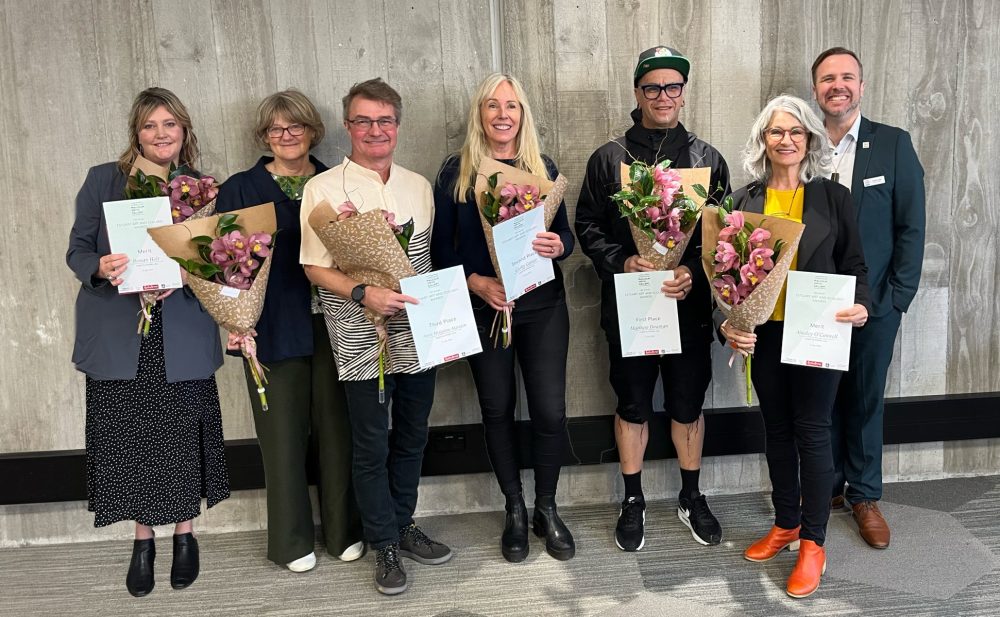
- By Carlos Norton, AUT Journalism Student
This year’s Estuary Art and Ecology Awards has embraced its ecological theme more than ever, with Matthew Dowman’s painting Tuna taking the top prize.
Marking its 18th anniversary, the contest staged at Uxbridge Arts and Culture in Howick is the country’s only art award dedicated to art and ecology.
It asks artists from across New Zealand to “research and respond to the Tāmaki Estuary,” showcasing its beauty and addressing its pollution.
Twenty-two finalists were chosen from more than 80 entries, with submissions ranging from paintings and sculptures to mixed media and film.
Dowman, who lives in Highland Park, describes his painting as an “emotional response” to the poor water quality and pollution in the Tāmaki Estuary.
“I take care of around 50 tuna (freshwater eels) that live in the estuary with the community,” he says.
“However, about 15 of them have died recently from chemical and rubbish dumping in the river.
“This [his winning work] is definitely an emotional response to that. It’s the second time this has happened over the past 18 months.”
A practicing artist and teacher at Whitecliffe College, he hopes his artwork will encourage community engagement with restoration projects.
“It’s all about getting people to think about the environment, and their impact on the environment.”

Second-place went to Cathy Carter for her photograph Eyes Wide Open.
Third-place was awarded to Alysn Midgelow-Marsden, for her digital film Migration at the Margins. Merit awards went to Rowan Holt and Ainsley O’Connell.
Supported by the Howick Local Board, the Tāmaki Estuary Environmental Forum, Gordon Harris Art Supplies, and the Rice Family Partnership, over $9000 in prizes was up for grabs.
Writer and ecologist Annette Lees judged the contest and she says she felt a special connection to the artists and artworks.
“These awards have really resonated with me as they bring my two worlds together – the creative world, with me writing and being an author, and my trade as an ecologist.”
Lees is passionate about the estuary, spreading awareness about the importance and historic value of the land.
“The estuary has been the beloved home of over 30 generations of tangata whenua,” she says.
“It’s been fought for, cared for, and has served as a central part of their storytelling and identity.”
Intense development along the Tāmaki catchment, which stretches over 17km, has meant the surrounding land and estuary have been negatively impacted.
Poor water quality, large amounts of sediment and introduced invasive species have not only reduced its visual appeal but also upset the habitats of indigenous species that live in and around the estuary.
“But with the care and attention many [artists] are paying to our estuary, that tide is slowly turning,” Lees says.
Howick Local Board chairperson Damian Light points out the council’s future plans to improve the natural environment.
“We’ve renewed our commitment to pest removal, stream restoration and pollution prevention programmes.”
The 22 finalists’ artworks are on display at Uxbridge Arts and Culture in Howick until August 31, with a People’s Choice Award currently accepting votes.










